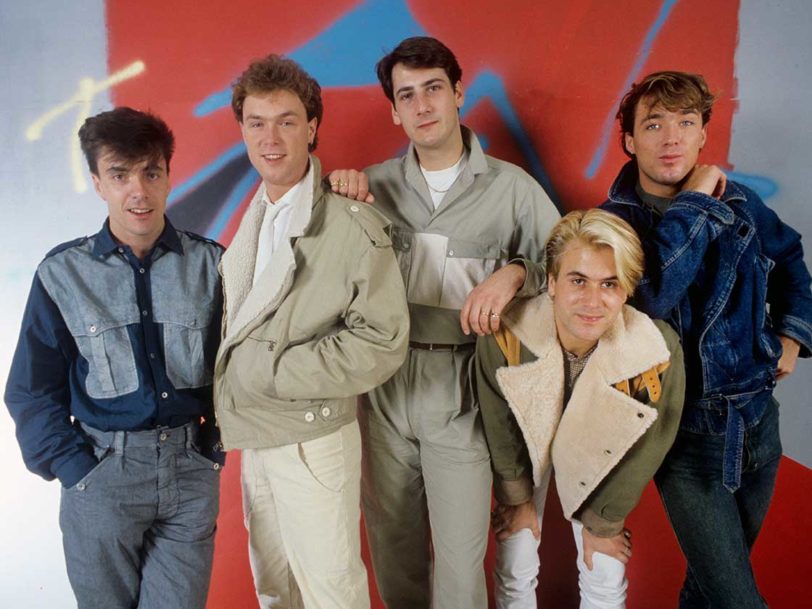Spandau Ballet’s career arguably begins at its creative peak with Journeys To Glory. Released on 6 March 1981, it signalled a wave of critical attention for the five-piece New Romantic group. The soul-boy balladry and posturing stadium pop that secured them millions of record sales lay in the future – for now, theirs was a glorious fusion of art, commerce and good old-fashioned showmanship.
Listen to Journeys To Glory here.
Front and centre of the New Romantics
Routinely dubbed the house band of the Blitz, a club in London’s West End with a reputation that far outscaled its square footage, Spandau Ballet had perfected the knack of pairing choppy guitar riffs with sharp synths to support the booming baritone of lead singer Tony Hadley. Dressed to impress, the five young working-class men had been working hard on songs that would get them noticed by the record industry… but not for them a predictable timetable of small gigs up and down the country. Instead, starting with their first-ever live gig, at the Blitz, in December 1983, the group orchestrated a series of showcase dates across the capital’s clubs and made sure they were front and centre for a TV documentary on the New Romantic scene.
Launching their own record label, Reformation Records, Spandau Ballet staged a gig on HMS Belfast for select industry executives and the press, then stood back to watch the bidding war. Everyone took the bait and expectation was sky-high when the band’s debut single, To Cut A Long Story Short, was released through Chrysalis in December 1980. Immediately debuting just outside the UK Top 40, it was in the Top 5 only three weeks later, its riff-heavy dancefloor punk-pop causing a Top Of The Pops sensation (think floppy fringes, big blouses, tartan and a touch of make-up) while the influential teen press seized on the band’s photogenic appeal. The song remains one of the best debuts of the 80s.




